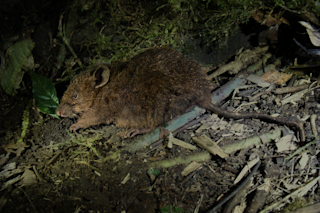A shrew-like mouse species recently discovered in the mountains of the Philippines may play a vital role in the survival of the endangered Philippine Eagle. The new species (Baletemys kampalili) is named Balete’s mouse after Danilo (Danny) Balete, the late biologist who discovered it.
Like the Amazon Rainforest and the Great Barrier Reef, the mountains of the Philippines are full of biodiversity. The dense jungle around the mountains is the perfect habitat for animals and other organisms to thrive.
“In the past several decades, we’ve learned just how incredibly important the Philippines are in terms of being home to mammals that are found nowhere else, and a lot of that knowledge can be traced back to fieldwork led by Danny Balete,” says Larry Heaney, curator of mammals at Chicago’s Field Museum and senior author of the paper describing the new mouse in the Journal of Mammalogy, in a press release.
...















